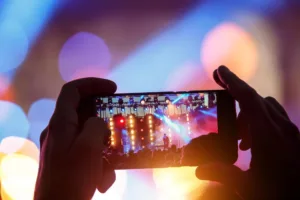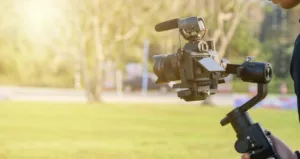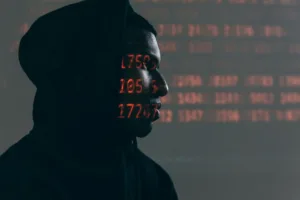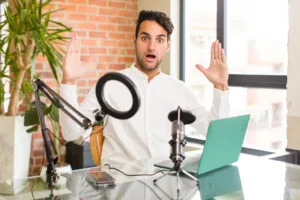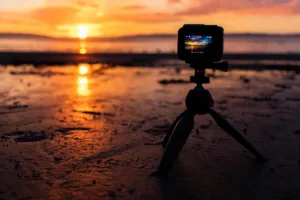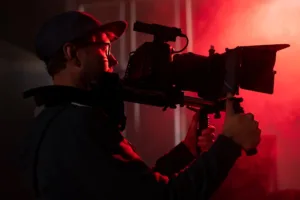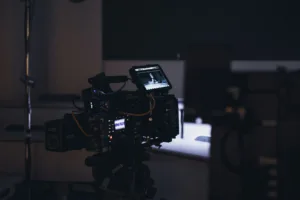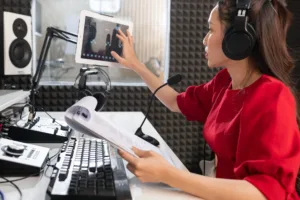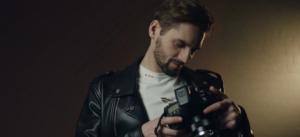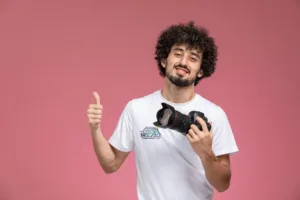The Best Genres for Background Music in Educational Videos.
When creating educational videos, it’s crucial to maintain high content quality. The appropriate background music can enhance your production, making it more engaging and professional. Background music assists in setting the tone, holding viewer interest, and reinforcing the educational material. The choice of the right genre for your educational video depends on the theme, audience, and the message you want to convey. In this post, we’ll explore the best genres for background music in educational videos and discuss how platforms like TuneCutter.com, a leading provider of royalty-free music, can enhance your content.
Why Background Music Matters in Educational Videos
Before diving into specific music genres, it’s important to understand why background music plays such a crucial role in educational videos.
- Engagement: Music is a powerful tool that keeps viewers connected, especially in lengthy or complex content. A well-chosen soundtrack can help maintain the audience’s attention, making them feel more involved in the learning process.
- Mood Setting: Music is a key player in influencing emotions. In educational videos, it helps create a learning atmosphere, whether calm, inspiring, or energizing, thereby immersing the audience in the content.
- Pacing: Music is not just a background element, it’s a guide that can help shape the pacing of the video, making transitions between sections smoother and helping to emphasize key points, thereby keeping the audience focused.
However, the choice of music must be carefully considered, as inappropriate music can distract or even detract from the educational experience. Let’s look at some of the best genres to consider for your educational videos.
1. Ambient Music: A Calm and Neutral Choice
Mood/Theme: Relaxing, Neutral, Focus
Ambient music is ideal for creating a calm and neutral atmosphere, making it perfect for educational videos where focus and concentration are essential. This genre features soft, repetitive sounds that blend into the background, allowing the viewer to absorb the content without distraction.
Why Use Ambient Music in Educational Videos?
- Enhances Focus: The soothing sounds of ambient music encourage relaxation, allowing viewers to focus entirely on the educational material.
- Non-Intrusive: It is subtle and unobtrusive, ensuring that it doesn’t overpower the speaker’s voice or visuals.
When to Use: Ambient music works well in tutorials, science videos, or any content where a peaceful environment helps with learning.
Example from TuneCutter: On platforms like TuneCutter, ambient tracks like “Calm Serenades” or “Hopes and Dreams” can provide a perfect background for instructional or informative videos.
2. Classical Music: Elegance and Intellect
Mood/Theme: Intellectual, Soothing, Inspirational
Classical music has long been associated with intellectual pursuits, making it an excellent choice for educational content. The genre includes works from composers like Bach, Mozart, and Beethoven, whose music is often used to stimulate thinking and creativity.
Why Use Classical Music?
- Stimulates the Mind: Studies have shown that classical music can improve cognitive performance, which makes it a good choice for educational content.
- Timeless and Elegant: The sophistication of classical music can add an air of authority and seriousness to your video.
When to Use: This genre is perfect for history lessons, philosophy discussions, or any educational material that requires a formal or sophisticated tone.
Example from TuneCutter: Royalty-free tracks like “Symphony of Learning” or “Inspiring Sonata” from TuneCutter can add a refined and uplifting touch to your educational video.
3. Corporate Music: Professional and Polished
Mood/Theme: Uplifting, Motivational, Positive
Corporate music is characterized by its polished, motivational sound, often used in business or instructional videos to create a sense of professionalism and positivity. It typically includes a mix of guitars, pianos, and light percussion, making it ideal for conveying an optimistic and goal-oriented message.
Why Use Corporate Music?
- Sets a Positive Tone: Corporate music is designed to inspire and motivate, which can keep viewers engaged with the educational material.
- Universal Appeal: The neutral, uplifting nature of corporate music works well across various educational niches, from business training to online courses.
When to Use: This genre works well in professional training videos, business tutorials, or motivational educational content.
Example from TuneCutter: Tracks like “Business Aspirations” or “Corporate Clarity” on TuneCutter can offer a modern and professional vibe to your video, helping you communicate complex topics in a more approachable way.
4. Acoustic Folk: Warmth and Connection
Mood/Theme: Organic, Relaxed, Friendly
Acoustic folk music offers a warm, organic sound that feels approachable and friendly, making it a great option for educational videos aimed at a younger audience or for content where you want to create a sense of community and connection. Featuring acoustic guitars, light percussion, and occasionally vocal harmonies, this genre conveys authenticity and a down-to-earth feel.
Why Use Acoustic Folk?
- Creates a Welcoming Atmosphere: Acoustic folk music has an inviting and relatable feel, which can make viewers more receptive to the educational material.
- Adds Personality: This genre’s organic sound can give your video a more personal and heartfelt touch.
When to Use: Acoustic folk works well for children’s educational videos, language learning content, or any video where you want to create a relaxed, friendly learning environment.
Example from TuneCutter: Royalty-free tracks like “Acoustic Sunshine” or “Folksy Learning” from TuneCutter are perfect for creating an inviting and warm backdrop for your educational content.
5. Electronic Music: Energy and Innovation
Mood/Theme: Modern, Energetic, Dynamic
Electronic music is a versatile genre that can range from calm and chill to fast-paced and energetic. For educational videos, electronic music can provide a modern, tech-savvy feel, making it ideal for content related to technology, innovation, or contemporary subjects.
Why Use Electronic Music?
- Keeps Energy Levels High: The upbeat, rhythmic nature of electronic music can help maintain viewer interest, especially in longer videos.
- Modern and Relevant: For tech-related or futuristic topics, electronic music feels cutting-edge and contemporary, adding a fresh vibe to your educational content.
When to Use: Use electronic music for videos about technology, science, or any subject that benefits from a high-energy, forward-thinking soundtrack.
Example from TuneCutter: Tracks like “Digital Frontier” or “Tech Innovations” from TuneCutter provide a dynamic, modern backdrop that complements educational content in tech or science fields.
6. Lo-Fi Beats: Chill and Relaxed
Mood/Theme: Relaxing, Casual, Focused
Lo-fi beats have exploded in popularity for their laid-back and calming vibes, making them perfect for educational videos where you want viewers to feel relaxed yet focused. Lo-fi music is known for its mellow rhythms and nostalgic tones, making it easy to listen to for extended periods.
Why Use Lo-Fi Beats?
- Encourages Focus: The repetitive and calming nature of lo-fi music promotes concentration, making it ideal for study-related educational content.
- Casual and Approachable: Lo-fi music has a friendly, relatable feel that makes learning more casual and less intimidating.
When to Use: Lo-fi beats are excellent for tutorials, study guides, or any educational content that benefits from a laid-back, focused atmosphere.
Example from TuneCutter: “Gerard Velez” or “Denis Pavlov” from TuneCutter provide the perfect lo-fi background for casual and educational videos.
Choosing the Right Genre on TuneCutter
With the vast array of royalty-free music available on TuneCutter, choosing the right background music for your educational video has never been easier. Here are some tips for selecting the best track:
- Match the Mood: Consider the emotional tone of your content and match it with the appropriate genre.
- Keep It Subtle: Remember that background music should complement, not overshadow, the educational material.
- Test Different Tracks: Listen to a few tracks within each genre to find the one that fits your video best.
Conclusion
The right background music can transform your educational video, enhancing the learning experience and keeping your audience engaged. By exploring different genres—whether it’s the calming tones of ambient music or the dynamic energy of electronic beats—you can create an atmosphere that perfectly matches your content. Platforms like TuneCutter.com make it easy to find royalty-free music that elevates your educational videos without the hassle of licensing issues.
So next time you’re producing educational content, don’t forget the power of background music in setting the tone and boosting viewer engagement. With the right genre, your video can educate, inspire, and resonate with your audience on a whole new level.




